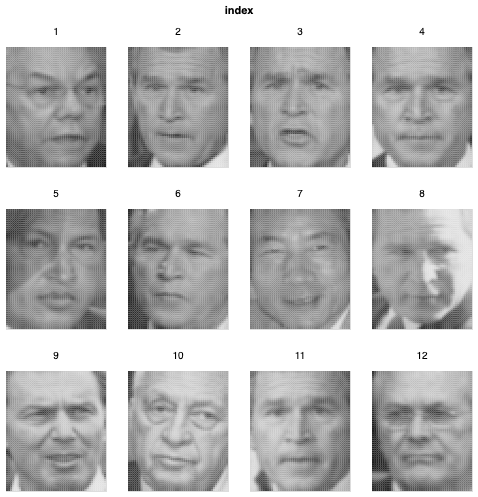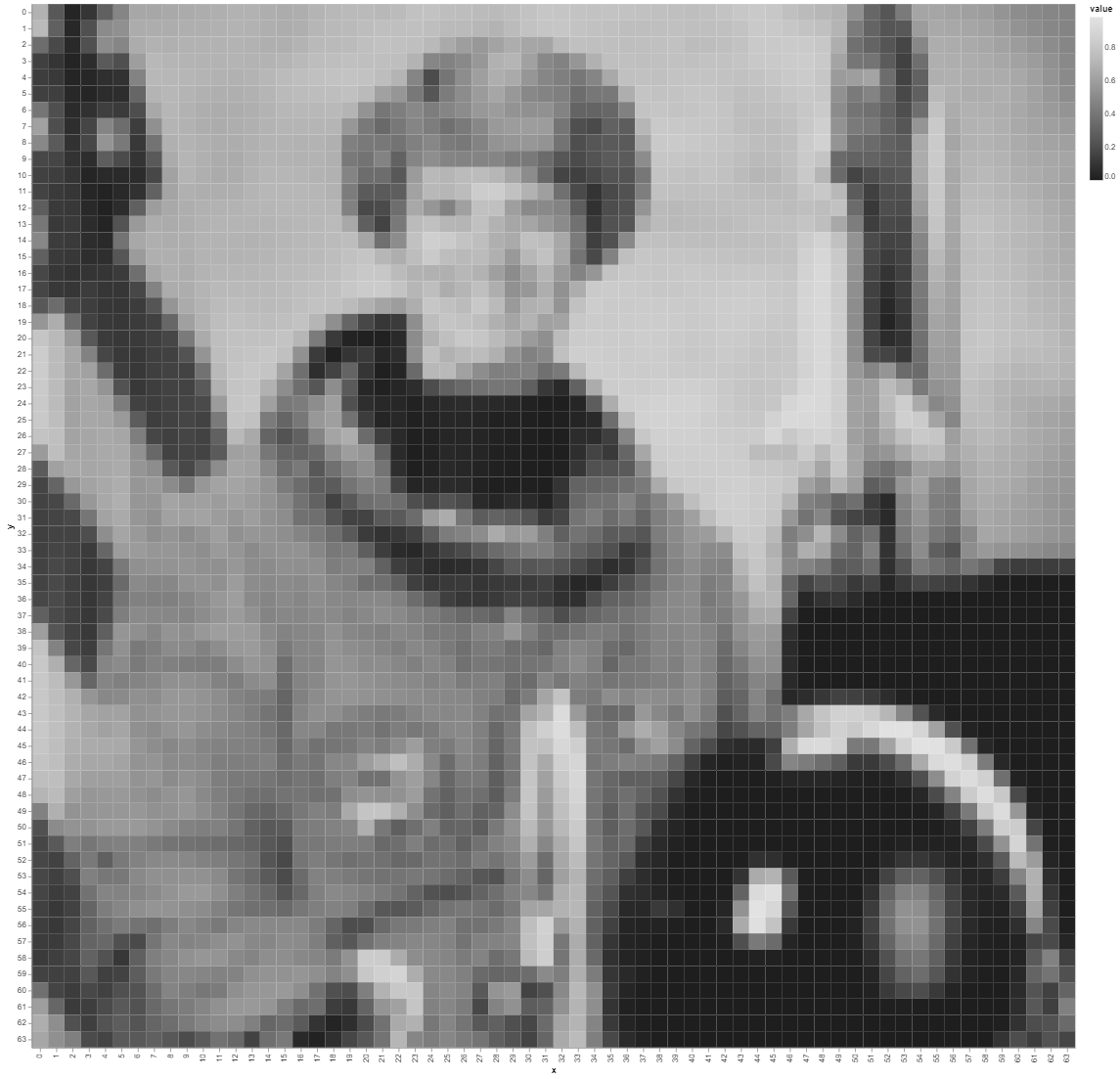Altair features an image mark that can be used if you want to plot images that are available at a URL; for example:
import altair as alt
import pandas as pd
source = pd.DataFrame.from_records([
{"x": 0.5, "y": 0.5, "img": "https://vega.github.io/vega-datasets/data/ffox.png"},
{"x": 1.5, "y": 1.5, "img": "https://vega.github.io/vega-datasets/data/gimp.png"},
{"x": 2.5, "y": 2.5, "img": "https://vega.github.io/vega-datasets/data/7zip.png"}
])
alt.Chart(source).mark_image(
width=50,
height=50
).encode(
x='x',
y='y',
url='img'
)
![enter image description here]()
Altair is not as well suited to displaying 2-dimensional data arrays as images, because the grammar is primarily designed to work with structured tabular data. However, it is possible to do using a combination of flatten transforms and window transforms.
Here is an example using the data from the page you linked to:
import altair as alt
import pandas as pd
from sklearn.datasets import fetch_lfw_people
faces = fetch_lfw_people(min_faces_per_person=60)
data = pd.DataFrame({
'image': list(faces.images[:12]) # list of 2D arrays
})
alt.Chart(data).transform_window(
index='count()' # number each of the images
).transform_flatten(
['image'] # extract rows from each image
).transform_window(
row='count()', # number the rows...
groupby=['index'] # ...within each image
).transform_flatten(
['image'] # extract the values from each row
).transform_window(
column='count()', # number the columns...
groupby=['index', 'row'] # ...within each row & image
).mark_rect().encode(
alt.X('column:O', axis=None),
alt.Y('row:O', axis=None),
alt.Color('image:Q',
scale=alt.Scale(scheme=alt.SchemeParams('greys', extent=[1, 0])),
legend=None
),
alt.Facet('index:N', columns=4)
).properties(
width=100,
height=120
)
![enter image description here]()




